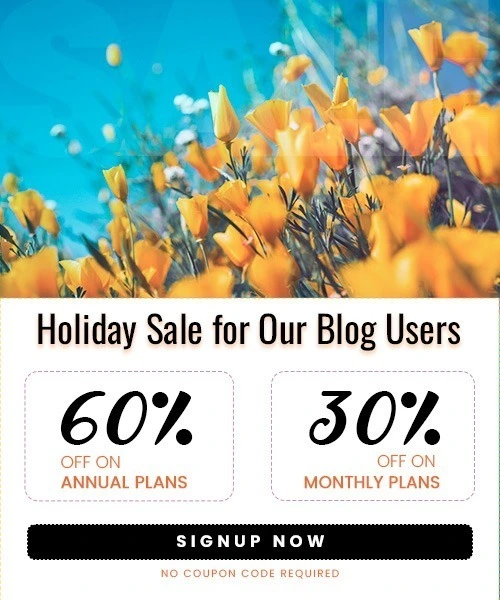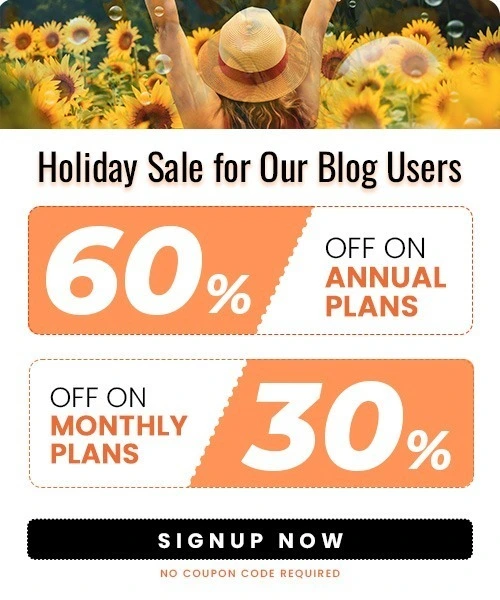Facebook Advertising 101: Types, Tips, and Real Examples
Last Updated on June 5, 2025 by Himanshu Rawat
In the present day and age of the digital world, Facebook advertising is the foundation of any online marketing plan. With a massive user database and advanced targeting options, Facebook provides companies with the best ways to reach out to and communicate with their viewers.
This article explores the fundamentals of Facebook Advertising, their relevance, best approaches, and some practical advice for achieving the maximum out of advertising.
What are Facebook Ads?
Facebook Ads are business-paid messages that are displayed in users’ News Feeds, Stories, Marketplace, and elsewhere on Facebook and its partner properties.
They may be images, videos, carousels, slideshows, or collections, and aim to generate particular actions like visits to websites, purchases, app installations, or brand awareness. You can connect with the audience that matters most to your business.
Why do we have to run ads on Facebook?
Placing ads on Facebook is a shrewd decision for companies that want to get the most out of their marketing efforts within budget. Here’s why Facebook Ads remain the top choice for marketers across the globe:
- Vast Audience Reach: With over 3.065 billion monthly active users. Facebook has a scale that is unmatched across the globe.
Whether you are targeting local consumers or planning to scale globally, with the platform, you have access to a vast and international user base instantly. - Advanced Targeting Features: One of the greatest strengths of Facebook is its advanced targeting capabilities. Advertisers can zero in on users by location, age, gender, interests, behavior, job title, relationship status, and so on.
This is not just casting a broad net, it’s targeting the people most likely to be interested in your brand. - Affordable Advertising: Facebook advertising is extremely affordable, particularly when contrasted against other marketing media.
The average CPC rate of Facebook in April of 2025 is $0.704(CPC), even small businesses can play the game. Additionally, Facebook permits you to fix a custom daily or lifetime budget, allowing you complete control over your spend on advertisements. - High Return on Investment (ROI): About 40% of marketers name Facebook among the three most important ROI drivers in social media advertising.
- Flexible Goals: If you need to create brand awareness, gather leads, drive sales, or promote an app, Facebook has campaign objectives that fit your goals
- Powerful Analytics and Optimization Tools: Facebook offers detailed performance insights, allowing you to monitor everything from click-through rates to conversions.
You can easily test and tweak your ads in real time to improve performance and get the most out of your budget.
Major Facebook Advertising Statistics
Below are some industry highlights based on recent statistics:
- Facebook is the most popular social platform used by marketers, and More than 89% of businesses now rely on Facebook Ads for marketing.
- The average conversion rate for Facebook Ads across all sectors is 9.21%.
- Facebook’s targeting capabilities in terms of audience are the most advanced among social platforms, allowing businesses to target highly specific segments
What kind of business should advertise on Facebook?
Facebook Ads work for almost all types of businesses, but they are especially good for:
1. eCommerce Brands: Dynamic product ads and intelligent suggestions encourage high conversion rates.
Example: Warby Parker
Warby Parker, an online eyewear retailer, leverages Facebook’s ads to showcase its new arrival products and augmented reality (AR) technology, allowing users to try on glasses virtually before purchasing. This innovative approach enhances customer engagement and drives higher conversion rates.

2. Local Businesses: Geotargeting features enable stores to reach local customers and push local deals.
3. Real Estate: Agents can highlight properties to specified demographics and locations.
Example: REMAX New Dimension
They use Facebook ads to create an emotional connection by showcasing a cozy holiday moment. In just a few lines, the ad highlights the home’s spacious layout, ideal for hosting, and cleverly hints at a large kitchen by saying there’s room for “every…Thanksgiving side dish.” It’s a simple yet powerful way to market space and warmth through storytelling.

4. Consultancies, Investment, and SaaS: Sophisticated targeting enables specialized industries to reach ideal customers.
5. Fitness, Healthcare, and Hospitality: These markets enjoy high adoption and affordable ad metrics.
Example: Beericana Festival
Beericana, a craft beer and music festival, used Facebook Ads to promote their event, resulting in over 45,000 impressions and a 25x return on ad spend. This success was achieved through engaging video content and targeted promotions.
6. B2C Retailers: Brands selling directly to consumers benefit from Facebook’s enormous user base and shopping integration.
Example: Calvin Klein
Calvin Klein utilized Facebook Ads to launch a new fragrance line, achieving an 11-point lift in ad recall. The campaign featured a series of video ads in a carousel format, effectively capturing consumer attention.
How to run ads on Facebook?
- Set Up a Facebook Page: You’ll need a business Page to promote.
- Go to Facebook Ads Manager: This is the primary tool to create, manage, and track your ads.
- Select Your Campaign Objective: Pick from objectives such as Awareness, Traffic, Engagement, Leads, App Promotion, or Sales.
- Identify Your Audience: Apply demographics, interests, behaviors, and custom/Lookalike Audiences for targeting.
- Choose Ad Placements: Select where you want your ads to show (e.g., Facebook Feed, Stories, Instagram, Messenger).
- Set Your Budget and Schedule: Determine how much to spend and when ads will run.
- Create Your Ad: Upload images, write engaging copy, and include a robust call-to-action.
- Launch and Monitor: Monitor performance in Ads Manager and optimize based on performance
What are the types of Facebook ads?
Here are the 12 varieties of Facebook ads, ranging from image and video to dynamic and poll ads, to increase engagement, sales, and brand exposure.
1. Image Ads
- Simple and effective.
- Just a single image with a short caption, headline, and call-to-action (CTA).
- Great for product highlights, brand awareness, and promotions.
2. Video Ads
- Use video to showcase a product, demo, behind-the-scenes, or tell a story.
- Can be short (6–15 seconds) or longer, depending on placement.
- Ideal for capturing attention and boosting engagement.
3. Carousel Ads
- Multiple scrollable images or videos in a single ad (up to 10 images).
- Each card can have its link, headline, and CTA.
- Perfect for showing product ranges, features, or a step-by-step story.
4. Slideshow Ads
- Lightweight video-like ads are made from a series of still images, text, and audio.
- Load quickly even on slower internet connections.
- Great for reaching audiences in areas with limited bandwidth.
5. Collection Ads
- Designed for mobile.
- Features a cover image or video and a set of products underneath.
- When clicked, it opens an Instant Experience (formerly Canvas)—a full-screen shopping experience.
6. Instant Experience Ads (Full-Screen Ads)
- An immersive, mobile-only ad format.
- Can include videos, images, carousels, and CTAs all in one interactive screen.
- Great for storytelling, product showcases, or lead gen.
7. Lead Ads
- Used to collect contact info (like email or phone) directly in the ad.
- Perfect for newsletters, quotes, or bookings without sending users off Facebook.
8. Messenger Ads
- Ads appear in the Messenger app.
- Start direct conversations with users or promote a Messenger chatbot.
- Great for personal engagement and customer service.
9. Stories Ads
- Full-screen vertical ads that appear between Facebook or Instagram Stories.
- Short, punchy, and ideal for visual impact.
- Can be images or 15-second videos.
10. Reels Ads (Instagram + Facebook)
- Short-form video ads are shown between Reels.
- Great for viral-style content, challenges, or quick product showcases.
11. Dynamic Ads
- Automatically promote products to people based on their past actions (like visiting your site).
- Often used in retargeting.
- Personalized and highly effective for e-commerce.
12. Poll Ads
- Format: Interactive polls within image/video ads.
- Best For: Market research or audience engagement
Facebook Ad Tips for Success
1. Use Lookalike Audiences
- Upload your email list, website visitors, or engaged followers to build Lookalike Audiences and reacquire new users like your highest-performing existing customers.
- This is amongst the most efficient strategies for scale campaigns and reaching cold audiences that are most probably to convert.
2. Create Engaging Visuals
- Facebook is a visual platform. Use high-quality images or videos that are relevant to your message and audience.
- Visuals should be eye-catching and directly related to your offer to increase engagement and clicks.
3. Run Ads with a Sense of Urgency
- Incorporate limited-time offers, countdowns, or phrases like “Today Only” to encourage immediate action.
- Urgency can significantly boost click-through and conversion rates.
4. Geotarget Ads
- For local businesses or events, use Facebook’s location targeting to reach users in specific cities, regions, or even within a certain radius of your store.
- This ensures your ads are seen by people most likely to visit or buy.
5. Optimize for Mobile
- Over 90% of Facebook users access the platform via mobile devices.
- Design your ads with mobile in mind: use vertical images or videos, concise copy, and ensure landing pages load quickly on smartphones.
Summary
Facebook advertising is still a great tool for companies looking to grow their audience, connect with their audience, and meet their marketing goals. With knowledge of the platform’s capabilities and effective strategies, companies can tap into the full potential of Facebook Ads to achieve success and beyond.
Frequently Asked Questions
1. What are Facebook Ads and how do they work?
Facebook Ads are paid posts shown to targeted users based on interests, behaviors, and demographics. You set a budget, pick an audience, and Facebook tracks performance like clicks and conversions.
2. Why use Facebook Ads instead of just posting?
Ads reach a wider, targeted audience beyond your followers and offer features like CTAs and detailed targeting that regular posts don’t.
3. What’s the minimum budget to run ads?
You can start with as little as $1/day, but many marketers recommend a minimum of $200 to see meaningful results.
4. How do I know if my ads are working?
Use Facebook Ads Manager to track key metrics like impressions, clicks, CPC, and conversions in real-time.
5. Why isn’t my ad performing well?
Issues often include poor targeting, weak visuals or copy, unclear CTAs, or an unappealing offer. Test and tweak your ads to improve performance.



